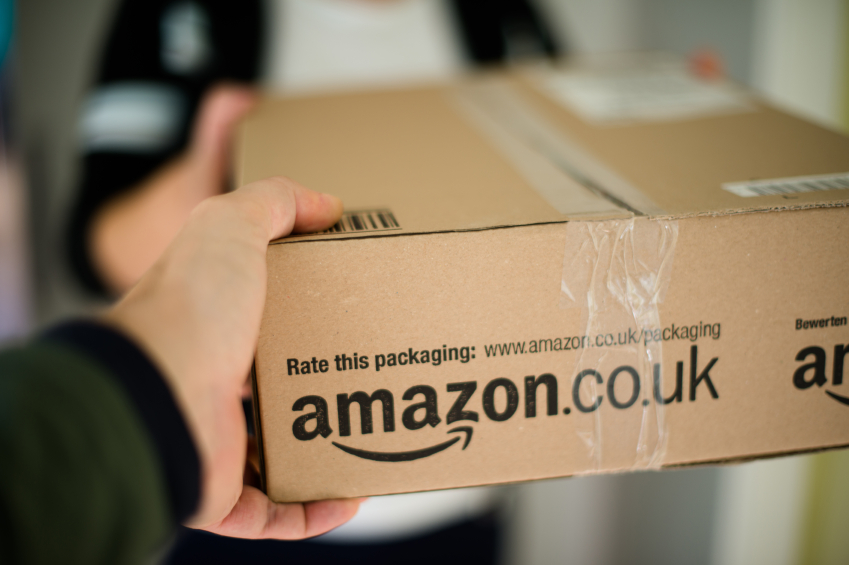I have good news for Amazon.com, Inc. (AMZN) shareholders: Between rising earnings per share and a correction to the stock price, Amazon stock is trading at the lowest price-to-earnings ratio I’ve seen it sport in a long time.

There’s just one problem. The “lower” P/E for Amazon stock is still a ridiculous 430.
I know, I know. Amazon’s earnings are skewed lower due to its massive reinvestment in its business. And avoiding Amazon stock due to its high valuation by traditional metrics would have meant missing out on two decades of truly amazing growth.
But as Amazon continues to mature as a company, valuation will matter again, and anyone buying and holding Amazon stock expecting to see a repeat of the past 20 years of performance is likely to be sorely disappointed.
How on Earth Do You Try to Measure Amazon?
Let me start by saying that I love Amazon and that I use it all the time. It’s almost hard to believe that Amazon started as a humble online book store two decades ago. Founder Jeff Bezos is one of the great capitalist innovators of our age, and I have nothing but respect for the man. So I’m not hating on AMZN here.
- Apple Stock Is So Cheap, It’s Ridiculous
But given that we’re in a market correction right now, I believe this is the time for a sober reflection on the Amazon stock price.
But doing this is harder than you might think. How, exactly, do you define Amazon stock when looking for comps? Is it a retailer? Is it an enterprise cloud company? A video streaming company?
Well, yes. Amazon stock is actually all of the above.
Amazon competes with Wal-Mart Stores, Inc. (WMT), Target Corporation (TGT), Best Buy Co Inc (BBY) and just about every other big-box store in retail. But it also goes head to head with Microsoft Corporation (MSFT), International Business Machines Corp. (IBM) and a host of others in enterprise and cloud services via its AWS services.
And Amazon is the only real competitor of note to Netflix, Inc. (NFLX) and Alphabet Inc’s (GOOG, GOOGL) YouTube in streaming video. (Amazon and Alphabet also compete on the enterprise services front.)
Finding proper comps for Amazon stock can be something of a challenge, to say the least. So, I’m just going to take a kitchen sink approach and compare Amazon stock to them all. I used the price-to-sales ratio rather than the P/E ratio because, frankly, the razor-thin profit margins of Amazon and Netflix render that metric all but useless.
| Company | Ticker | P/S |
| Amazon | AMZN | 2.34 |
| Walmart | WMT | 0.44 |
| Target | TGT | 0.66 |
| Best Buy | BBY | 0.24 |
| Microsoft | MSFT | 4.69 |
| IBM | IBM | 1.47 |
| Netflix | NFLX | 5.73 |
| Alphabet | GOOGL | 6.87 |
If we’re measuring Amazon stock as a retailer, then it is grossly, even ridiculously overpriced. It’s 5.3 times more expensive than Walmart, 3.6 times more expensive than Target and a whopping 9.8 times more expensive than Best Buy.
Yet the valuation looks downright cheap when compared to software and services king Microsoft, video streaming service Netflix and internet conglomerate Alphabet, all of which sport P/S ratios that are more than double that of Amazon stock.
So, which of these is the most accurate comp?
That’s a remarkably difficult question to answer because Amazon doesn’t break out a lot of detail in its quarterly report.
Nevertheless, let’s tinker with the numbers a little more. About 7% of Amazon’s sales last year came from AWS, and another 19% came from other services. The remaining 74% came from merchandise sales. So, Amazon is still primarily a low-margin retailer, and that isn’t going to change in the immediate future. That means its valuation should be closer to that of Walmart rather than that of Alphabet.
Now let me be clear: Amazon stock should trade at a premium to Walmart. The company is growing faster and has none of the legacy infrastructure that Walmart does. But how much of a premium? Double? Were Amazon to trade at double Walmart’s P/S ratio, that would put its stock price at less than $200 per share … a far cry from today’s $536.
Bottom line: Amazon is a fine company. But Amazon stock is still very dangerous at today’s prices.
Charles Sizemore is the principal of Sizemore Capital, a wealth management firm in Dallas, Texas. As of this writing, he was long MSFT.
